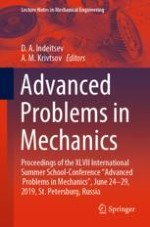2020 | OriginalPaper | Buchkapitel
Fatigue Reliability of Structures: Methodology of Assessment and Problems
verfasst von : Ruslan V. Guchinsky, Sergei V. Petinov
Erschienen in: Advanced Problems in Mechanics
Aktivieren Sie unsere intelligente Suche, um passende Fachinhalte oder Patente zu finden.
Wählen Sie Textabschnitte aus um mit Künstlicher Intelligenz passenden Patente zu finden. powered by
Markieren Sie Textabschnitte, um KI-gestützt weitere passende Inhalte zu finden. powered by
